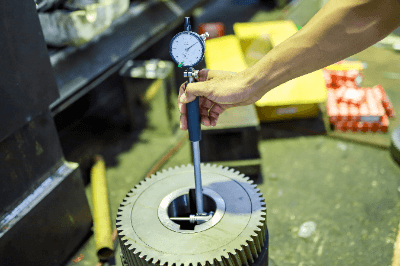What Is a Shunt Resistor?

A shunt resistor is an instrument used to measure the inside diameter of a hole with high precision. It is a comparative measuring instrument that measures the inside diameter by comparing it with a ring gauge, and can distinguish even micron-level differences.
When the measuring section is inserted into the hole, the guide plate guides the measuring element to the diameter of the hole, and the measuring element expands and contracts to match the inside diameter of the hole. The displacement of the measuring element is converted to a one-to-one right angle by the internal cam mechanism, and this is transmitted to the dial gauge as an indicator to read the amount of displacement as a numerical value.
Uses of Shunt Resistors
Shunt resistors are mainly used to measure the inside diameter of a bore. Since the rods and washers attached to the measuring section come in various sizes, they can be adjusted to match the inside diameter of the hole to be measured. However, a reference ring gauge is always required for measurement.
Another feature is that the length of the measuring section to the handle is relatively long. Therefore, it can easily measure the diameter of deep holes that are difficult to reach with a three-point micro, such as deep holes in long workpieces and large castings.
Principle of Shunt Resistors
When measuring with a shunt resistor, it is first necessary to perform zero-point alignment.
For example, when measuring a 20 mm diameter hole, prepare a 20 mm ring gauge and adjust the size of the measuring section to 20 mm. When the measuring section is inserted into the ring, the zero point is set at the position where the pointer of the dial is fully clockwise. This completes the zero point alignment.
After that, insert the measuring section into the target hole and read the value when the pointer of the dial reaches the full clockwise position, as was done for the zero point adjustment. If the value at this point is 0.03 mm to the right of the zero point, the inside diameter of the hole is 20.00 – 0.03 = 19.97 (mm). Conversely, if it was 0.03 mm to the left of the zero point, the value would be 20.00 + 0.03 = 20.03 (mm).
The cylinder shunt resistor is a highly challenging measuring instrument for those who handle it for the first time, as there is a lot of setting work involved in the process of measurement. Nevertheless, it is a good idea to learn how to use it as soon as possible, because once you get used to it, you will acquire the skill to measure quickly and accurately.